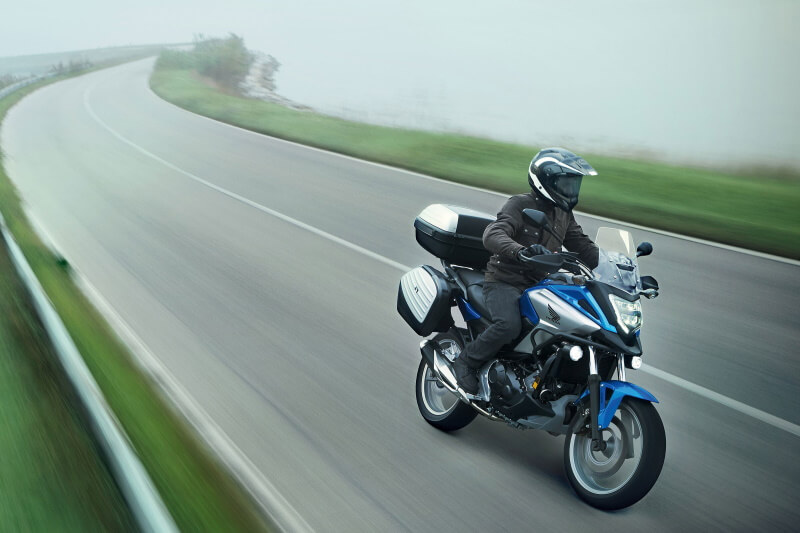
The Best Auto Transmission Tourers And When NOT To Buy Them
I have a question for you. How many people do you know that drive a car with manual transmission (aka, ‘the stick shift’) in the US? Yeah, that’s what I thought -- not many. Given how ubiquitous auto transmissions are with cars, you’d think that motorcycle manufacturers would take a hint when it stares them in the face, and offer automatic options, particularly on touring bikes.
But even the most ardent motorcycle enthusiast would be hard-pressed to name more than a handful of bikes that feature automatic transmission. Which is odd, because not having to think about gear changes makes a great deal of sense, especially on tourers. When you’re cruising through winding, twisty back roads in the countryside, it can be a lot of fun to focus less on the bike and more on the scenery, when you feel like it.
So: what are your options for shift-free touring, why aren’t there more of them, and is it really a good idea to get an automatic tourer?
Among modern motorcycles equipped with automatic transmission, Honda’s DCT models are the best options currently available on the market. Alternatively, most tourers can be transformed into stall-free and nearly clutch-free machines by installing a simple auto-clutch.
We’ll explore each of those points (and the bikes) in more detail, but first let’s look at the pros and cons of automatic transmission. Or if you want to skip straight to the list of tourers with automatic transmission, click here.
Why Get An Automatic Motorcycle In The First Place?
There are a couple of benefits to an automatic transmission, the biggest being that you don’t have to worry about stalling the bike. For new and experienced riders alike, stalling is something that does happen now and then, especially when you’re tired after a long day of riding.
With an automatic, that’s eliminated. Just choose the riding mode, and the bike takes care of gear selection and changes for you. The latest DCT gearboxes from Honda are extremely good at this, even in rush-hour traffic. Twist the throttle as required, and the bike will have you on your way, with gear changes so smooth you often don’t even realize when they occur.
This may not sound like a big deal, but trust me -- don’t make up your mind about it until you ride one for at least a few hours. Once you get past the initial “getting used to it” phase, you’ll be surprised at how such a little thing as changing gears, frees up such an astonishing amount of mental bandwidth.
In fact, in conditions where a manual would require frequent clutch modulation (such as off-road riding or inching in heavy traffic), an automatic saves physical effort as well. If you’ve ever had to work a clutch for hours in stop-start traffic, you know exactly what I’m talking about. Your left wrist and forearm start to feel like they're killing you. In bad cases, the muscle fatigue means you simply cannot continue riding, so you have no option but to stop -- however far you are from your destination.
The ability to eliminate all of this, is not something to scoff at. Especially not in a touring motorcycle, that has aspirations of helping you cover huge distances with long hours in the saddle. Such an ability sounds basically like a low-level superpower, so you might be wondering what the kryptonite is…
What’s the (Really Dirty) Dirt on Automatic Transmission Motorcycles?
As you might have heard, there are one or two problems with automatic transmissions. For one thing, automatic transmissions generally come with a lot of complicated electronics, and no matter what anybody says, electronics can and sometimes do fail.
If you’re really considering a tourer to ride off into the middle of nowhere, just remember -- a manual gearbox can be fixed even at a small hamlet in the middle of the Gobi desert. Might take a bit longer than just dropping by at your favorite dealership, but it can be done.
Fixing an electronic transmission like a DCT gearbox, on the other hand, is somewhat more complicated. Diagnosing the problem can itself be impossible without the right equipment and software, and even then, procuring the right tools and spares to do the repair can take several weeks, if not longer.
Secondly -- and this is a pet peeve of mine -- any kind of technical riding in off-road conditions, is significantly more challenging without a clutch. If you’re not planning to do much off-road riding, this isn’t applicable, so skip right ahead. If you do have intentions of taking your bike to places well and truly off the tarmac, do read on.
I know you’ve probably heard countless “motorcycle journalists” sing praises of how well Honda’s DCT systems work off-road. But hear me out.
99.9 percent of the sort of “off-road” riding that these journalists do in their review videos is NOT technical riding. Honestly, nobody needs an adventure tourer to ride on a bit of gravel or sludge, or to climb up a tiny knoll with a bit of grass on it.
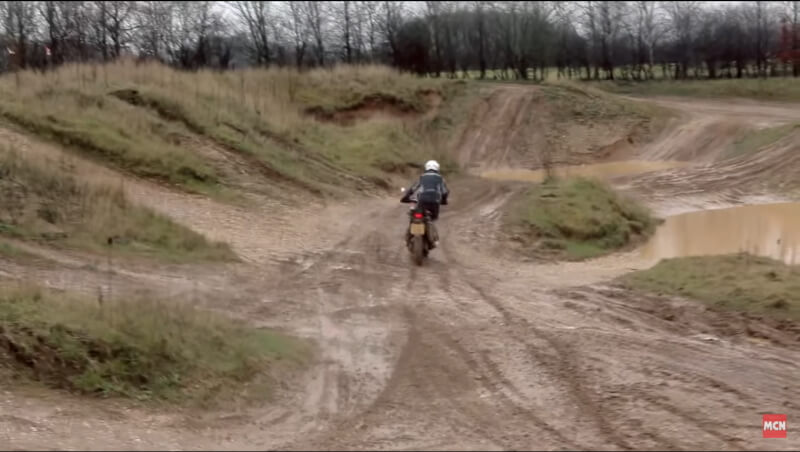 |
| You don't need an adventure tourer to ride over some bumps and wet mud. Image: MCN |
Look, I get it. I love adventure tourers, they’re my absolute favorite type of motorcycle. They’re superbly comfortable, which is why I’m planning to buy one even though I don’t do any serious off-roading.
The point I’m trying to make is, although adventure tourers are great machines even for non-off-road use, their real selling point is that they can do things off-road that most other bikes simply cannot. Also, their off-road abilities go far beyond handling a few fire trails and green lanes.
And on off-road trails that are technically demanding (i.e., they involve clearing obstacles and slippery hill climbs), riding an automatic can make things trickier. Why, you ask?
Well, I’ll tell you:
A., suppose you’re inching your way up a trail of loose rocks. If When things get too hairy and the bike threatens to run away from (or with) you, with a manual transmission, you can simply pull in the clutch lever. On an automatic, you have to pray that you retain enough balance to release the throttle and grab the brakes. Otherwise, from that point on, your bike is going to be the vehicle that delivers you to the scene of your next crash.
B., say, you have to stop on an incline and you find your bike sliding backwards down the trail. Despite having a fistful of front brake. Riding a manual? Just dump the clutch to intentionally stall the engine and lock up the rear wheel in gear. On an automatic, you better hope that you don’t need your right leg on the ground, because you’ll need it up on the rear brake lever. Otherwise, from that point on, your bike is going to be the vehicle that -- well, you get the picture.
And C., if at any point you feel slightly off-balance and find yourself holding on to the handlebar, you better retain the presence of mind not to pull at the throttle. Because if you do, you have no clutch to cut power, and, well, see above.
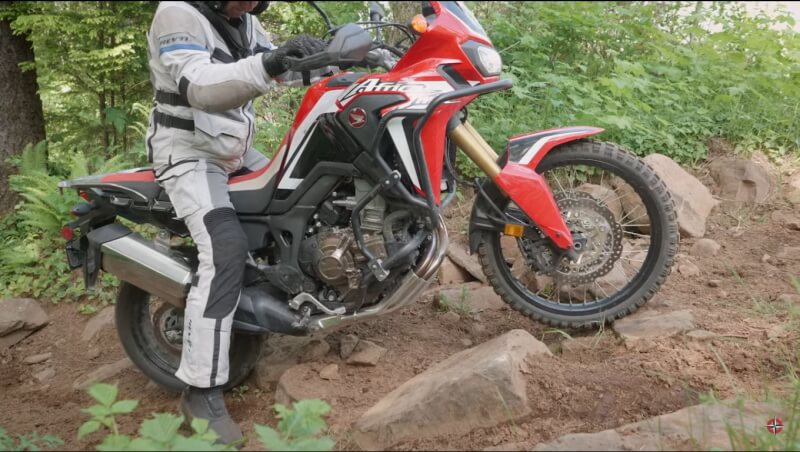 |
| Adv bikes' real abilities: technical off-roading involving clearing obstacles and slippery hill climbs. Image: MotoTrek |
Now, I’ll admit that none of these factors are deal-breakers. Anyone serious about technical off-road riding in scenarios like those above should commit to improving their riding skills so that such factors aren't more than minor hindrances. But while experienced off-road riders may deal with these situations, an auto transmission certainly adds to the learning curve for riders new to off-roading.
As I said before, though, if you’re not looking at serious off-road riding, you don’t have to worry about this. This brings us to the last of the disadvantages.
Choice. Or rather, the lack of it. If you want any motorcycle, let alone a tourer, that comes with auto transmission as stock, you’re in a tight corner for options -- as you’ll see below.
Auto Transmission Touring Motorcycles - What’s On The Menu?
Leaning towards the sport side of the adventure-sport touring spectrum is the Honda NC750X.
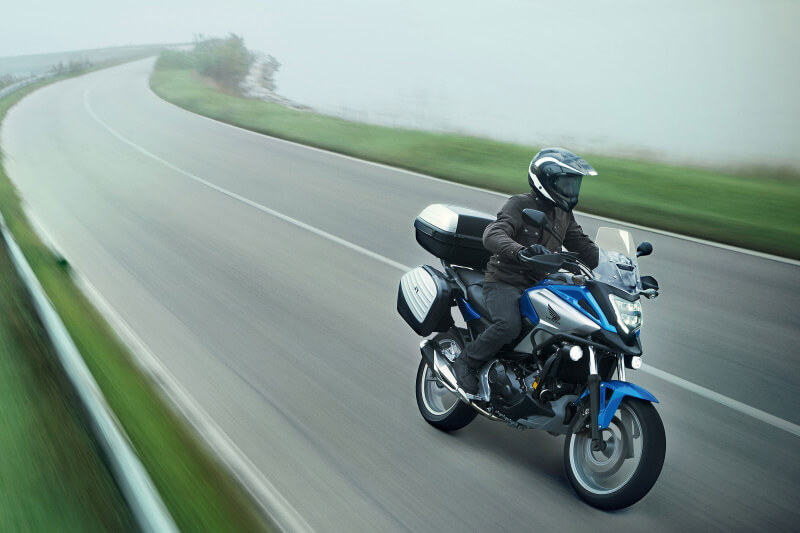
I haven’t ridden the NC750X yet, but I hear from other riders that it’s rather brilliant. The gas tank isn’t where you’d expect it to be. In its place is a cleverly camouflaged storage box that’s got enough space to fit a full-size helmet. The fuel tank, meanwhile, is located under the seat, which has the added benefit of significantly lowering the bike’s center of gravity.
The 745-cc parallel twin is reportedly silky smooth, but it produces just 54 horsepower, which a lot of people find disappointing. Still, at $8,899 for the DCT version, it’s the second-cheapest new bike on this list.
The NC’s bigger cousin is the Honda VFR1200X.
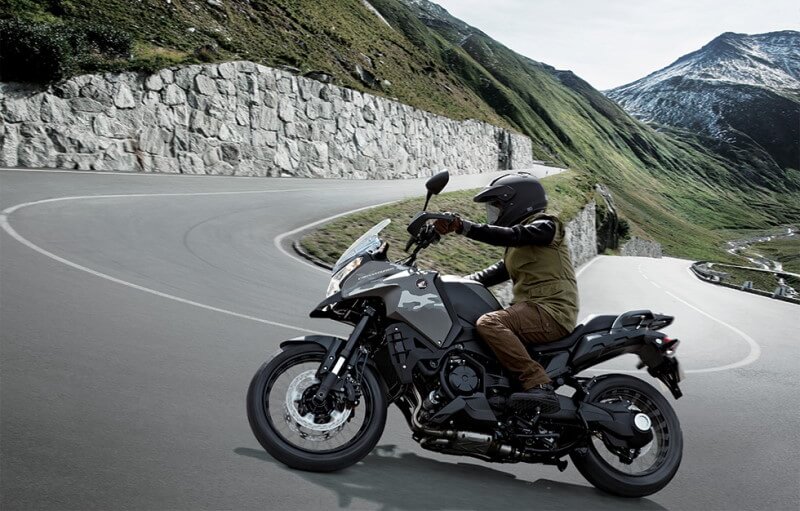
Its 1.2-liter V4 boasts 127 horses. Honda’s website indicates that the DCT variant is priced at $16,399, which makes it ridiculously expensive. But just look around online and you’ll find better options. There are some especially attractive bikes with staggeringly low mileage (under 10K miles) and nearly 50% off the sticker price.
If you like your tourer with a bit more of the cruiser flavor, then the Honda CTX700 might be more your cup of tea.
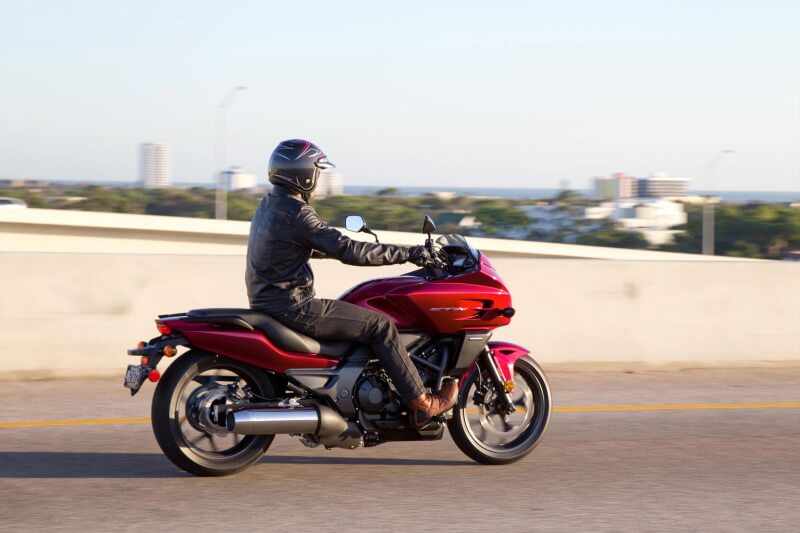
It’s powered by a 670-cc parallel-twin that puts out 51 horsepower. That might not sound like a lot, but keep in mind that it’s about as much power as a Harley Davidson Street 750 makes. And, for about the same price as (or slightly less than) the Harley, you’re also getting DCT technology. But if you really need more oomph in your tourer...
The Honda Gold Wing might be what you want.
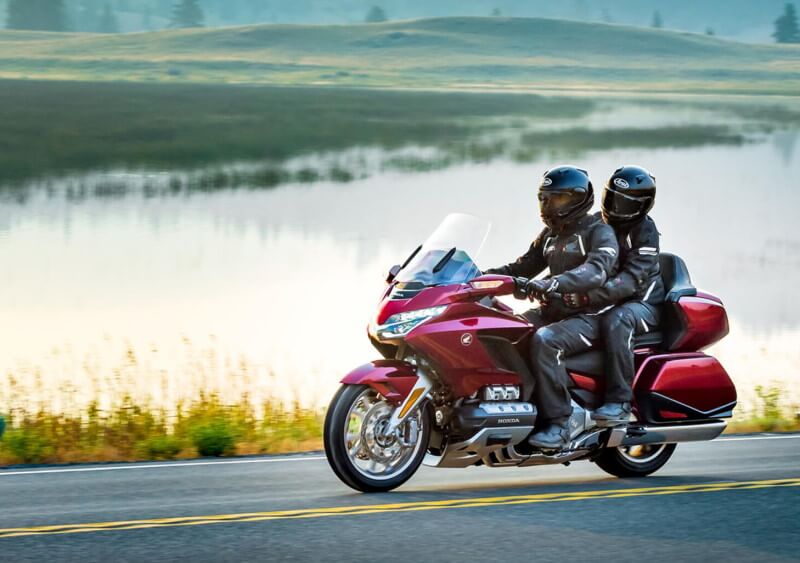
This bike is famous for a reason. That 1.8-liter, six-cylinder engine is unlike pretty much anything else you might have tried on a motorcycle. It makes 118 horsepower, which isn’t much, but it also delivers a phenomenal 123 ft-lb of torque at just 4000 RPM. That’s about as much torque as a Toyota Corolla makes -- in a vehicle that weighs eight times less.
But brute speed and acceleration aren’t what the Gold Wing is about. It’s possibly the ultimate luxury tourer. I’m yet to meet anyone who says that the Gold Wing could be more comfortable than it is. Starting at $25,000 for the base DCT model, it isn’t cheap, but then, if there’s a feature that you might want on a motorcycle, this bike has it. That said, the Gold Wing definitely isn’t taking you anywhere off-road.
For adventure seekers, the Honda Africa Twin is where it's at.
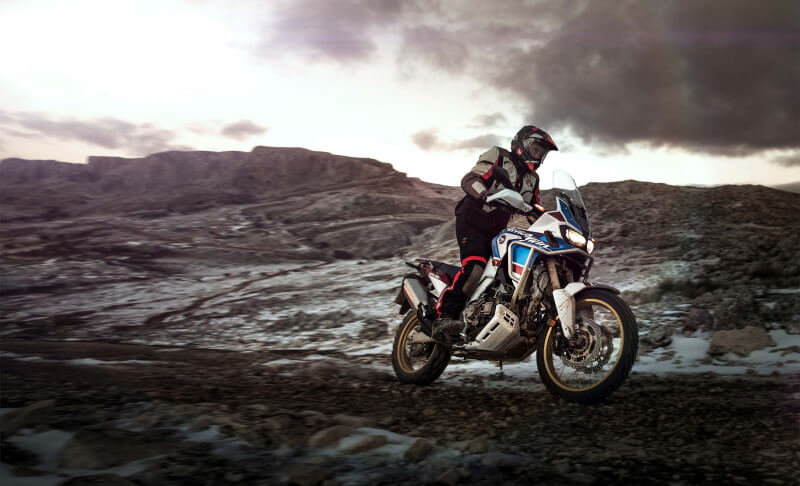
The original Africa Twin won the Dakar rally four times in the 80s, and the current avatar is Honda’s attempt at making an improved version of that bike. The 1-liter parallel-twin delivers 101 horsepower, and the bike has all the fancy electronic tech you would expect on an adventurer tourer. The DCT version will set you back $15,199.
If you don’t like Hondas, though, you’re out of luck for automatic touring bikes -- at least, the new ones. If you’re open to buying old bikes, however...
You might find a great deal on a pre-owned Aprilia Mana 850 GT.
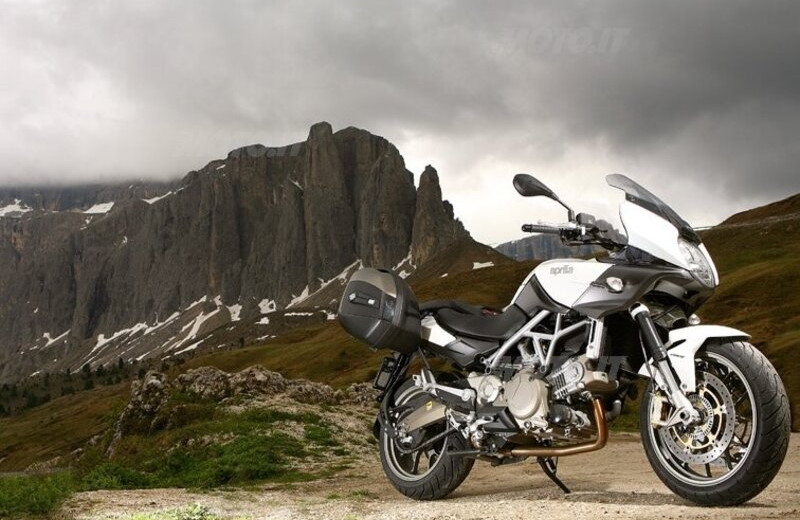
Unlike the other options on this list, this bike features a CVT gearbox. Most folks who’ve ridden the Mana 850 GT either absolutely love it or absolutely hate it. There’s no sitting on the fence with this bike, and that’s a good thing because it means the bike has personality.
Its 839-cc V-twin produces 76 horsepower. That isn’t much, but then, this bike is pretty light for an adventure tourer, at a dry weight of just 416 lb (189 kg).
As far as I know, Aprilia stopped selling the Mana 850 GT in the US back in 2015, but if you’re patient, you can find some excellent low-mileage bikes online for as little as $6,000, which is superb value for this much bike. You could also try importing it since it's available abroad, but I'd say that's going too far for this bike.
What Are The Alternatives?
Okay, so you don’t fancy any of the options on this list. But you still want an automatic. Well, in that case, you should consider getting the tourer you want and just installing an auto-clutch.
An auto-clutch is NOT an automatic transmission, but it comes pretty close. Once you install an auto-clutch, it’s essentially impossible to stall the bike. Bring your bike to a complete stop at any time -- in traffic, on a hill climb, for an emergency stop -- and you don’t have to worry about pulling in the clutch lever, because the clutch will take care of itself for you (hence the name, “auto clutch”).
This also means that you can start moving from a standstill without using the clutch lever, as long as you’re in a gear with enough torque to get rolling. In slow-moving city traffic, this works out as good as an automatic -- just slip your bike into second or third gear, and leave it there. You can stop at and pull away from lights without having to use your left hand or foot at all.
Of course, unlike with an automatic transmission, you still have to change gears manually when you want to, but that can be both an advantage and a disadvantage, depending on the riding situation and your personal preference.
Besides, consider the advantages: no juddering in and out of corners or stops, just smoothly decelerate in and accelerate out. Plus, reduced clutch wear, since the auto-clutch works more smoothly than manual clutch modulation. And of course, cost. Most auto clutch kits cost somewhere between $400 and $1000, depending on the bike you want one for. Compared to the cost of installing a custom auto transmission, this is inexpensive.
The most well-known auto-clutch brands out there are EFM and Rekluse, but there are other lesser-known makes available.
I hope this post leaves you in a better place to make a decision on an automatic transmission motorcycle. If you have any comments or questions, feel free to leave a comment below -- I read and respond to every single comment.
As always, ride safe and have fun!
